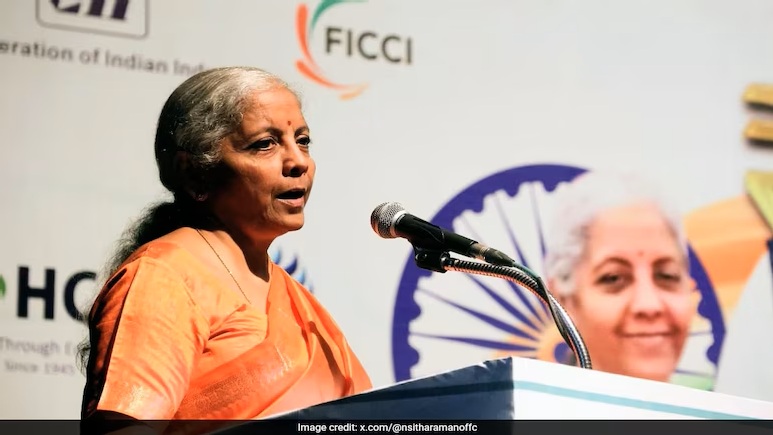GST Overhaul Slashes Rates, Reduces Tax Burden on Essentials Ahead of Festive Season
In a major tax reform move, Union Finance Minister Nirmala Sitharaman on Sunday announced a simplified Goods and Services Tax (GST) structure, replacing the existing four slabs with just two rates — 5% and 18%. The decision, which was approved unanimously by the GST Council, is being touted as a significant win for India’s 1.4 billion citizens.
Key Highlights of the New GST Reform:
- Old Structure: 5%, 12%, 18%, 28%
- New Structure: Only 5% and 18%
- Essentials: Tax on many essential items reduced to 0%
- Sin & Luxury Goods: A special 40% slab introduced for harmful/luxury items like:
- Cigarettes
- Tobacco
- Pan Masala
- Aerated Drinks
- High-End Luxury Cars
FM Nirmala Sitharaman’s Statement:
“Earlier, GST had four categories. Now, we have simplified it into two slabs. Items previously taxed at 12% and 18% have largely been moved to the 5% bracket. This will significantly benefit all 1.4 billion Indians. For essentials, tax is now 0%.”
She called the move “a victory for every citizen”, underlining that it wasn’t just a tax cut, but a reform that empowers the common man.
When Does It Come Into Effect?
The new GST rates will be implemented from September 22, 2025, just ahead of major Indian festivals like Diwali, Navratri, and Durga Puja. The timing aims to boost consumption and reduce prices during the high-demand festive season.
Why This Matters:
- Price Drop Expected: On clothing, household goods, daily essentials
- Lower Tax Burden: Especially on middle- and lower-income groups
- Boost to Economy: Increased consumption = More growth
- Simplified Compliance: Easier for businesses, especially MSMEs
PM Modi’s Vision for Rising Bharat
Prime Minister Narendra Modi had hinted at a major tax reform during his Independence Day address. The GST overhaul reflects the government’s commitment to easing the common man’s burden and strengthening economic activity across all sectors.
Summary:
India’s biggest GST revamp since its launch in 2017 is now official. With only two tax slabs, a focus on essentials, and a steep tax on luxury/sin goods, the new system aims to make taxation simpler, fairer, and pro-citizen.
“This is not just a tax cut – it is a collective achievement that will empower consumers and fuel India’s growth,” said FM Sitharaman at the Joint Conclave of Trade and Industries Association in Chennai.
Also Read : GST Rate Overhaul 2025: What’s Cheaper and What’s Costlier? [Full List]



